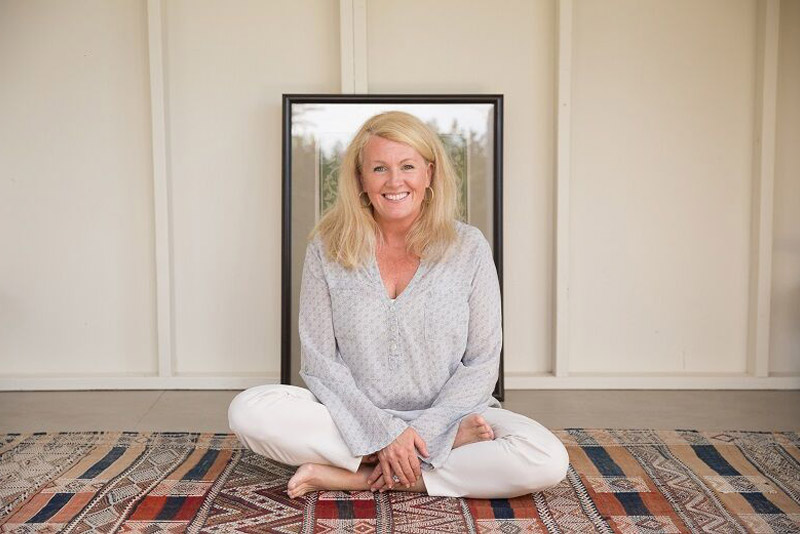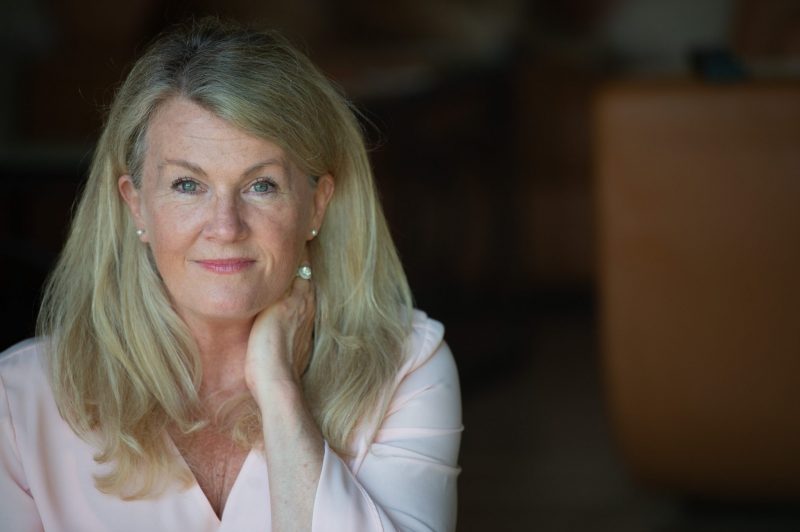Change your Habits, Change the World

Change your Habits, Change the World
You want peace on earth and you want to live in a beautiful world. So you meditate, you eat organic feed, you pray, you are kind to your neighbor, you recycle, but perhaps you haven’t really done all you can for this earth. Maybe it’s time to take a look at the way you interact with this beautiful planet.
Clean air and livable environments are priceless, all living things would tell you that if they could. It’s the responsibility of each one of us to take care of our own: out body, our home, and our planet. Our daily, weekly or seasonal habits can impact our earth and everything that lives on it. As humans, we have many choices in our lives – including what we buy, what we dispose of, and what size footprint we leave behind. While we aim to consume and feed and clothe ourselves we must realize that every choice we make to reduce, reuse and recycle helps to conserve our natural resources. Yes, we can then maintain our lifestyle with less impact on our natural environment.
It’s spiritual to help maintain a livable planet, not only for ourselves but for all. As we awaken through our meditation, mindfulness, and spiritual practices, we realize that yes, we are all interconnected, even if we don’t feel that way. We are not separate from ‘nature’.
Our disconnection from the natural world is apparent whether we are hunting and gathering in a store, shopping for water, produce, meats, dairy products, or ready made meals. (Or shoes, or clothing.) With everything perfectly packaged in plastic and styrofoam, we load up our carts and wheel them to the register.
I know I know, what you do might not seem to make a difference, or you can’t see what you have to do with it all. That’s because the degradation of our environment is so slow that it doesn’t really seem to be happening – not really. Sure we hear about weather patterns changing, and species on the brim of extinction due to habitat loss, but it really is so far away from us and isn’t enough impetus to change the habits of the average shopper who goes in week after week to the grocery store and walks out with bags and bags of packaged products. We want what we want – now. And everything we spend money on, we “vote” for. We vote with our money.
Have you ever asked yourself, “Where does that toilet paper come from?” “Where do all the plastic water bottles go?” “What happens to the trash I throw out?” Is the environment really a concern to the average shopper when he or she has to decide whether to spend a dollar more for a recycled product? Or a greener cleaner? Or locally grown vegetables? Where will they toss out the plastic container? Or do they even see the great benefit each one of their choices can make?
Here are some easy ways to go a little greener while shopping, cooking, working in the office, or throwing trash away.
These are easy tips on how to rethink, reduce, reuse or recycle to help you to consume less of the planet’s resources.
Buy organic.
Nourish yourself and your family with food that is free of antibiotics, added hormones, GMO feed. and other drugs, pesticides; no GMO animals. Organically raised animals have been shown to be significantly healthier than their factory-raised counterparts. Organic meat means it comes from animals that aren’t fed antibiotics, the bovine human growth hormone (rbGH), or other artificial drugs. Animals are also not allowed to eat genetically modified foods. Further, animal products certified as organic do not have their genes modified (for example, a scorpion gene cannot be spliced into a cow gene). These animals are raised in a healthier more humane environment, fed organic feed, and often eat a wider range of nutrients than those raised in factory farms (such as would be the case of free-range chickens and ranch cattle). The animals are not from a test tube. Nor are they allowed to eat the ground up remains of their same species (this appears to cause bovine spongiform encephalopathy, a horrific disease that destroys the central nervous system and brain which affects humans who eat these cows.)
Organic food is better for you and the environment.
Synthetic pesticides and fertilizers are not used on the food or land to grow or cultivate your food. Residues of persistent chemicals such as DDT, PCBs, dioxin, and many pesticides concentrate in animal and people fat. Eating organic reduces your exposure to these chemicals. Farmers working on organic farms are exposed to fewer chemicals. This safeguards groundwater, farmers’ health, topsoil, habitats, and neighborhood health.
The factory farm industry is run with cheap, nonrenewable fossil fuel. Producing, transporting, processing, and marketing the food all depend heavily on it. Without cheap fuel, industrial agriculture would be impossible because it would be too expensive. The heavy pesticide use on industrial farms contaminates groundwater and soil. Some people say that industrial farms are responsible for the loss of over half of U.S. topsoil.
Organic farms use less energy with careful ecological management and using natural ecological balances to solve pest problems. Organic farms use 70 percent less energy than industrial farms, and since they don’t use pesticides they help preserve ground water. The farming techniques of organic farms builds topsoil and doesn’t contribute to its erosion.
At the checkout.
Paper or plastic? Neither.
When we each bring your own bag – like a cloth or mesh bag – we are doing our part. They fit so much more and are easy to carry and use. And you probably have some. Stick them in your car when you think of it. And when you’re heading out to the grocery store, bring back all those plastic bags with you. You can either reuse them, (they’ll usually give you a small credit for each bag you reuse) or, put them in the bag recycling area provided. Get used to saying, “No thanks, I don’t need a bag,” for single items you might pick up at the drugstore, video store, or other places. So make your next trip to the grocery store an adventure.
Americans use almost 100 billion polyethylene plastic bags used each year., a considerable contribution to the 500 billion to one trillion used worldwide, according to Californians Against Waste. Nationwide, shopping bag recycling remains at just 1% of these bags. Plastic bags last 20 years in landfills. Plastic is more than likely a virgin material (i.e. not recycled) and is made from petroleum products (not a renewable resource), and most probably will never to be used again. Plastic bags are making their way into our oceans and waterways. According to recent studies, the oceans are full of tiny fragments of plastic that are beginning to work their way up the food chain. Invest in stronger, re-usable bags, and avoid plastic bags whenever possible. BYOB.
While we are talking about purchasing what we eat and drink, here are some other ideas to consider:
Super Size Me.
No that doesn’t mean supersize your meals or portions, it means buying big and in bulk. What if you favored foods you can purchase in bulk? You can get your whole grains by the pound. You could buy raw fruits and vegetables that don’t require fancy packaging. When you live a healthy lifestyle, a lifestyle that truly prioritizes respect for the planet and the health of your body, there is a lot less packaging to recycle in the first place.
Containers. Decide to avoid purchasing products in overstuffed packages, wasteful food containers, and plastic snack bags. Sure they look pretty, but what do you do with the packaging once you’ve eaten your salad? Choose products in containers that are already recycled, or that recycle easily, for example – glass or aluminum beverage containers and glass condiment bottles instead of plastic. Avoid over-packaged products — fruits and vegetables in cardboard and plastic. A study with Stonyfield Farm shows that it takes 27% less energy to produce and distribute a 32-ounce container of yogurt than an 8-ounce container! If all they packaged were their 32-ounce containers, the company would consume the equivalent of 11,250 fewer barrels of oil a year!
Food miles matter.
Food is traveling farther than ever. Once upon a time, people ate seasonally—artichokes in the winter, cherries in June. Now you can buy most fruits and vegetables practically year-round. The average American meal contains ingredients produced in at least five other countries. The average fruit or vegetable travels 1,500 to 2,500 miles between a farm field and a kitchen table. The transportation of food and agricultural products constitutes more than 20 percent of total commodity transport within the U.S. Buy Local. To help reduce CO2 emissions (released from trucks, airplanes, and cargo ships), it’s best to buy food that’s in season, organic, and grown locally, and the packaging is much less. When you buy fresh, local ingredients, the only thing you are left with are some plastic or paper bags, both of which are easily reused or recycled. Find a farmer’s market near you here: www.ams.usda.gov/farmersmarkets. By supporting local, sustainable and organic farms in your local community you also support the larger community of which we are all a part. And if you eat animal products, buy from such farms to provide the healthiest choice for your family and support the farms that support healthy and ecological neighborhoods.
Buy eggs in cardboard cartons.
Cardboard egg cartons are normally made from recycled paper, which biodegrades relatively quickly, and are also again recyclable—Styrofoam or plastic cartons take a much longer time to biodegrade and their manufacture produces harmful by-products. Choose locally grown, organic, free-range eggs.
Buy shade-grown, fair trade coffee.
Shade-grown coffee is for the birds, literally. According to coffeeresearch.org, about 150 species of birds live on shade-grown-coffee farms, while only 20 to 50 inhabit full-sun farms. With increased demand for cheap coffee, many Latin American growers have moved toward full-sun plantations, clearing the habitat of numerous native birds and increasing the use of pesticides and fertilizers. By drinking shade-grown coffee, you can help bird habitats and reduce the need for farming chemicals. Shade-grown coffee beans can be purchased at many grocery stores. Starbucks offers shade-grown coffee as well.
Whether your favorite coffee spot is Starbucks, Dunkin Donuts, or Coffee Bean & Tea Leaf, bring your own mug. Imagine if everyone did!
Refill your water bottles.
Just because the cases of water go on sale doesn’t mean that you should buy them. Americans throw away about 2.5 million non-returnable plastic bottles EVERY HOUR. Every ‘virgin’ material used is a drain on our natural resources, and the cost of the waste and pollution that end up in our air and our water is not paid for by the manufacturer or consumer, yet. Think about bringing your own filtered water with you in your own reusable bottles wherever you go
Minimize take out packaging:
Most take out containers from our favorite restaurants are not made from recycled materials and are not recyclable. So, when possible, eat at home, or in cafes and restaurants rather than taking things to go – that way you won’t have to use – and dispose of – single use take-out containers. Avoid lunches from the sandwich shop near the office that come in foam containers or containers that make the food look good but are difficult to recycle. And, talk to the business owners you patronize, ask them to clean up their act, choosing biodegradable containers for everyone’s sake!
School lunches a new way:
The tally of all the Ziploc bags, juice boxes, yogurt cups and accouterments of homemade school lunches adds up to 45 – 90 pounds of packaging waste per child over a typical school year. Pack your child’s lunch in reusable containers. Go to www.wastefreelunches.org for more information.
Buy recycled products
Always buy recycled paper products. There has to be a market for products made with recycled goods. Support this movement by purchasing recycled goods—you will save virgin materials, conserve energy, and reduce landfill waste. Recycle your toner, buy recycled paper. And remember to buy recycled single use products including toilet paper (which is no longer scratchy, like it used to be), copy paper, paper towels, and tissues. Look for garbage bags and bin liners labeled “recycled plastic,” and buy recycled toner cartridges for your fax machines and printers.
If you send me a receipt of at least $50 worth of recycled paper towels, Kleenex, or toilet paper purchases, I’ll send you my CD – Meditate, absolutely free! (Send your name, address & receipt to Sarah McLean, PO Box 1178, Sedona, AZ 86339, or send a photo to me in an email.)
Go vegetarian at three days a week. Or better yet, vegan! Sound like too much? Then try at least one day a week.
To produce one pound of beef requires 2,500 gallons of water—that’s 40 times more water than is used to produce a pound of potatoes. Livestock worldwide consumes half the world’s total grain. Before buying beef, think about the immense cost of energy used to raise cattle and to transport meat to your supermarket shelf. Besides all this, cows consume enormous amounts of antibiotics and are a prodigious source of methane, which is the number-two greenhouse gas; livestock is responsible for almost 20 percent of the methane in the atmosphere. Not only does animal agriculture produce surprisingly large amounts of air and water pollution, but it also causes 80 percent of the world’s annual deforestation. OK, if you must buy meat, choose to support farms that caretake the environment and the animals they raise – feeding them organically, and keeping them in a free-range environment. Vote with your food dollar. ..To get inspired, watch the movie Food, Inc. Rule of thumb: Eat more foods that grow on trees and plants and eat fewer foods that are manufactured in plants
Avoid buying disposable things.
Sure, disposable is convenient, but where does it go once you’ve used it? Institute a mug policy in your office. Bring one with you from home to and from work too. Don’t worry, Starbucks will rinse it and fill it up if you want. Did you know Americans throw away some 25 billion polystyrene cups every year, most of which end up in landfills? Do you even know where the landfill your stuff ends up in is? Refill your water bottles once or twice, and make your coffee in a ceramic mug. If you bring in cutlery from home, you will also cut down on those pesky plastic forks, knives, and spoons.
Down the toilet.
Every year, one tissue and toilet paper manufacturer alone uses over 25 tons of pulp from trees to make its products. Some of the trees they clear cut for our use are from Canada’s ancient Boreal Forests. For a few cents more you can buy recycled products requiring no trees to be cut down. That makes sense for products you only use once and then throw away.
If every household in the US replaced one roll of non-recycled paper towels with a roll of 100% recycled paper towels, we would save 864,000 trees and 3.4 million cubic feet of landfill space.
If every household in the U.S. replaced just one roll of 1,000 sheet virgin fiber bathroom tissues with 100% recycled ones, we could save 373,000 trees, 1.48 million cubic feet of landfill space, and 155 million gallons of water.
So let’s talk about the other end of purchasing and consuming….. Disposing of our waste.
You recycle, right? Who doesn’t? Someone. Nationwide, approximately 10% of households recycle. Every day, 250 tons of garbage from Sedona and the Verde Valley is buried at the Grey Wolf landfill on Cherry Road. Every day, 15 tons of recyclables from the Verde Valley Recycling Coalition are processed at Sedona Recycles – that’s a mere 6% of our resources being diverted from the landfill. That is because only 15% of area residents and 10% of businesses recycle. Kate Blevins, Director of Sedona Recycles urges us to make a difference, “Recycling is a solution to conserving our resources; it’s one thing we can do for our environment, our economy and our community.” She continues, “It is all about your daily life. It’s what you buy, what you consume, and how you distribute. I look at the world like there is plenty, plenty for everyone on the planet if we could waste less and distribute more. We have to break things down to having less and giving more, because it’s all about the giving.”
Good reasons to recycle – You’ll
- Cut the amount of virgin materials required for manufacturing.
- Save money – it is cheaper than landfilling or incineration.
- Save energy and water- one of the direct benefits of recycling is energy conservation.
- Create jobs and promotes economic development. At Sedona Recycles alone, 30 developmentally disabled workers from Rainbow Acres and ARC supplement their disability income by working there.
- Save trees. Half the Earth’s forests are gone, and up to 95 percent of the original forest area in the U.S. has been cut down.
- Protect wildlife habitat and biodiversity. Using recycled materials reduces the need to chop down, extract, process, refine and transport natural resources such as timber, crude petroleum and mineral ores. As a result, destruction of forests, wetlands, rivers and other places essential to wildlife is also reduced.
- Curb global warming. Reducing waste in landfills reduces emissions of CO2 and methane (another heat-trapping gas). Using recycled materials cuts down on the energy used in the manufacturing process, dramatically reducing emissions of greenhouse gases and other air pollutants. For example, recycling one ton of glass results in energy savings of more than 300 percent and lowers carbon dioxide emissions by 3.46 tons.
- Stem the flow of water pollution. Making goods from recycled materials generates far less water pollution than manufacturing from virgin materials.
By increasing materials’ recycling in the U.S. to at least 60%, the equivalent of 315 million barrels of oil per year could be conserved. Buying recycled products contributes to the demand for more recycled products. This will, in turn, save even more resources, reduce more pollution and protect more people’s health. On the other hand, as the size of the market grows, recycled products will cost less.
It’s easy to start recycling. You can create a recycling area in your own home and regularly bring your things to a local recycling center, or get curbside service. Recycling is easy, but it requires changing your routine. If you already recycle, take stock of what you routinely throw away and see if there’s more you could recycle. Re-use products before recycling them — paper and plastic bags at the grocery store, for example (better yet, carry a cloth bag). Re-use manila envelopes, and don’t print out an email unless it’s necessary. At the office, re-use paper by printing onto the blank side of used paper; then recycle. Go to earth911.org for local recycling information.
Recycle your batteries. Although the number of electrical gadgets that use disposable batteries is on the decline, each person in the U.S. discards eight batteries per year. Overall, Americans purchase nearly three billion batteries annually, and about 179,000 tons of those end up in the garbage. Batteries have a high concentration of toxic metals, which if not disposed of properly can seep into the ground when the casing erodes. Avoid disposable batteries by using your outlets whenever possible. If you can’t do without batteries, use rechargeable and recycled ones. New versions of rechargeable are easier to find and less expensive than ever before. You should also have your batteries collected and recycled. Go to www.rebat.com for a list of companies that participate in battery reclamation. Rechargeable batteries have a longer life span, resulting in less need for new materials.
Recycle your electronics. Find a way to recycle your old computers and parts, TVs, stereos, fax machines, cell phones, etc., visit http://www.epa.gov/osw/conserve/materials/ecycling/donate.htm to find out where in your area. In Arizona, you can recycle computers by donating them to Students Recycling Used Technology www.azstrut.org.
Recycling at home doesn’t get you off the hook at work. If your office doesn’t recycle or recycles only paper, find out why. If you work in a small office, call your local authority to discover what recycling equipment and services are available. These may include storage containers and compactors as well as collection. If you work in a larger office, ask your building-services coordinator why there are no recycling facilities and whom you would need to speak to about starting a recycling program for paper, glass, metal, and plastic. For more information, visit www.earth911.org. You can be the loudmouth about saving the planet: Ask, why don’t we recycle? I do it at hotels and airports too.
Encourage local businesses to recycle: The number one priority for Sedona Recycles this year is to get ALL the resorts in Sedona to recycle. 65% of all waste that ends up in landfills if from commercial waste. And 75% of all commercial waste is cardboard, that’s a lot of trees!
You can even recycle online: Online networks such as “Freecycle” or Craig’s list, are open to all who want to “recycle” that special something rather than throw it away. Whether it’s a chair, a fax machine, piano or an old door, feel free to post it. Everything posted must be free. The Freecycle Network, is a nonprofit organization and a movement of people interested in keeping good stuff out of landfills. In 2005 through Freecycle, an estimated 100 million pounds of reusable goods were exchanged. Visit www.freecycle.org. or www.craigslist.com.
Other ideas? Post your comment….
Sarah McLean
Sarah McLean is an acclaimed teacher and thought leader who is determined to create more peace on this planet by helping people wake up to the wonder and beauty of their lives and the world around them through the practices of meditation and mindfulness. She inspires audiences everywhere blending the spirit of Zen wisdom with Vedic knowledge and self-inquiry. She helps demystify meditation and makes it accessible to anyone. It was over 30 years ago when she began her daily meditation practice, and moved in to a Transcendental Meditation community. There, she received advanced training in meditation and studied Ayurveda. Since 1993, when she became the education director for Deepak Chopra’s Center for Mind Body Health, she's been teaching contemplative practices and mind/body health. In 1997, she went to India to live in a traditional ashram in India, When she returned to the States, spent two years as a resident trainee in a Zen Buddhist monastery. She fell in love with Self-inquiry and served as the director of Byron Katie's School for the Work. In 2012, she founded the McLean Meditation Institute, home of the Meditation Teacher Academy which certifies meditation and mindfulness teachers through its 300-hour teacher training program. Her bestseller, Soul-Centered: Transform Your Life in 8 Weeks with Meditation, and her most recent book, The Power of Attention: Awakening to Love have received rave reviews. She now lives in Santa Barbara, California where she trains meditation teachers and offers online classes and lives a life she loves.






